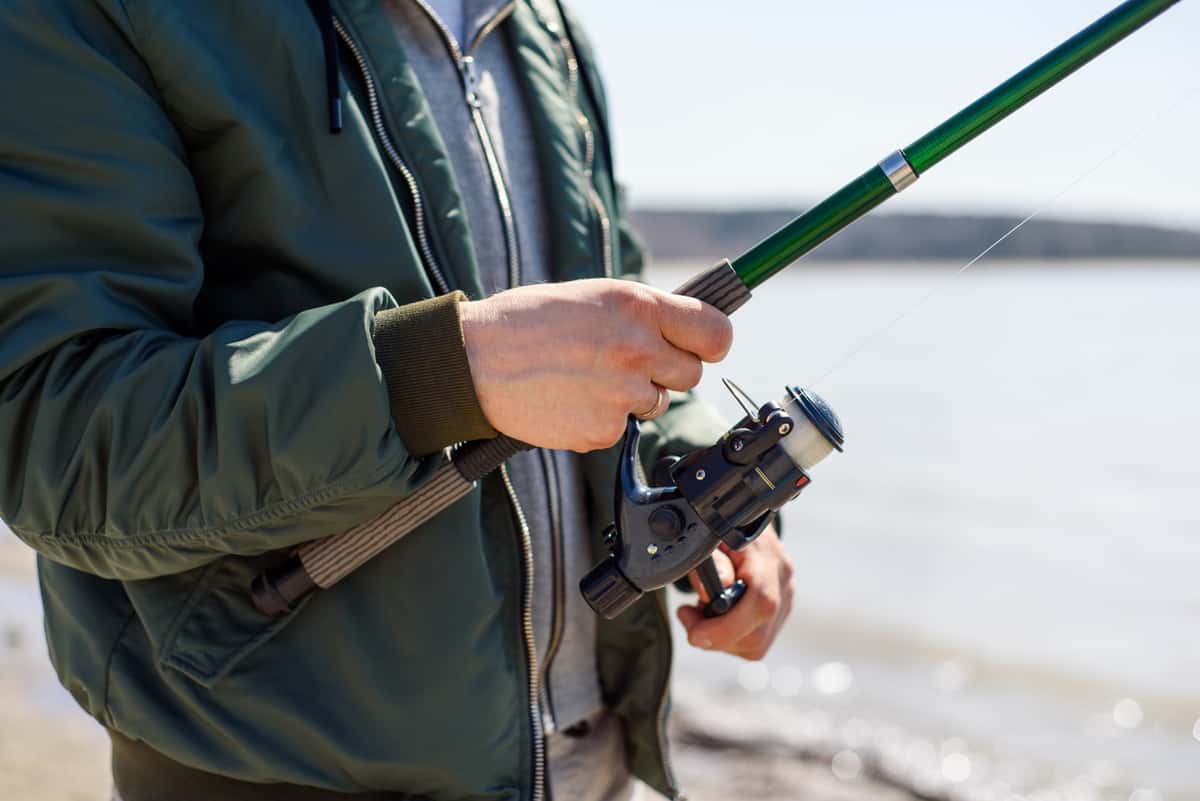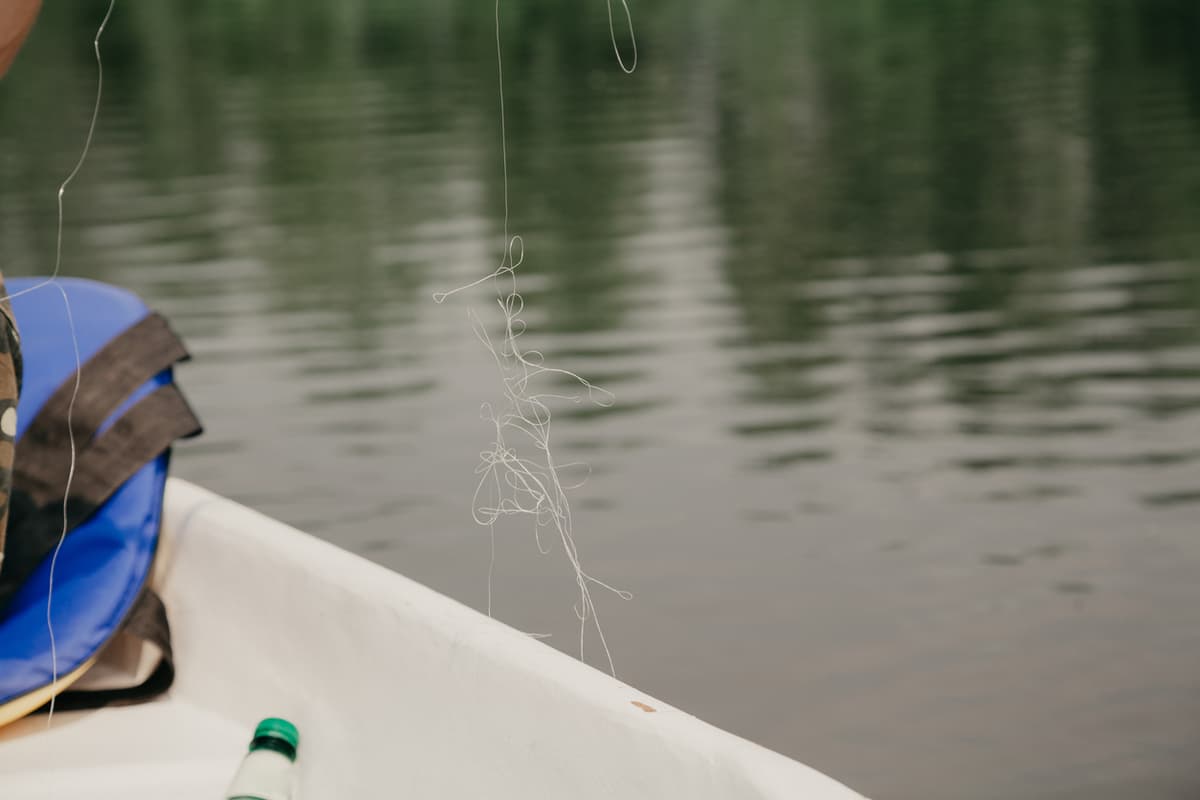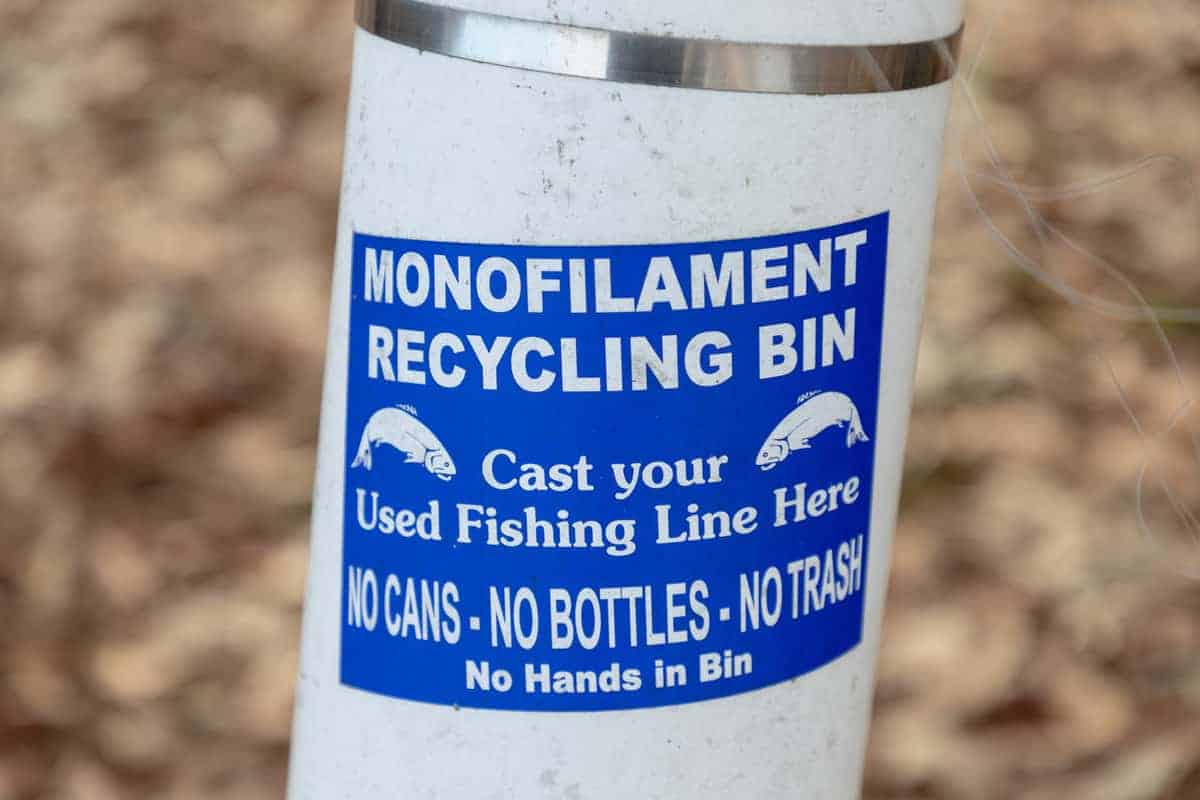
Most anglers have a roll or two of backup monofilament fishing line in their tackle boxes. Some of mine has have been in the box waiting to be used. Knowing now that the monofilament line doesn’t last forever, it may just make an exciting discussion item in my display case.
Monofilament lines are made from extruded nylon material that is easier to degrade by the elements than other lines, especially by UV rays. Monofilament should be replaced every 1 – 2 years depending on how much fishing you do.
Monofilament line is a great line to use, but lines don’t last forever due to various factors; explore these with me so that you’ll know when it is time to replace your monofilament line.
Monofilament Fishing Line Types – What They Made From
Monofilament lines are made from several different materials, but nylon remains the most commonly used. Changing the mixture of the different materials will give a varying degrees of stretch, abrasion resistance, and strength. These blends are called multi-polymers.
Nylon is the most common type of monofilament line. Nylon is susceptible to UV damage over time.
HDPE: High-Density Polyethylene. A hydrocarbon polymer. Known for its high tensile strength and heat resistance. UV Resistant
Polypropylene: It is a thermoplastic polymer made from propylene monomers, more durable than nylon, offers strength and less stretch than nylon. Moderate UV Resistance
Polyester: Also known as ester line, made from polyethylene terephthalate. Durable, strong but stiff, and springy. UV Resistant
Monofilament Line Replacement, When Is It Necessary?
Monofilament lines are by far the most used line globally and have many great attributes. Unfortunately, fishing lines don’t last forever, and mono doesn’t last as long as fluorocarbon or braided lines.
Tell-Tale Signs Of An Aging Monofilament Line
UV light degradation:
Nylon monofilament lines are prone to degradation by the sun’s UV rays. Fishing is, of course, an outdoor sport mostly practiced in hot sunny climates. HDPE, Polypropylene, and Polyester based lines are less prone to UV damage.
Most anglers would take a few months to rack up these hours in the sun, but it’s possible over 2 – 3 seasons for sure.
Mono tends to fade when exposed to the sun. Angler may not notice the fade as this happens over time.
A good practice is to compare the line’s colour to a new roll of the same line colour from time to time to pick up the warning sign early.
Loss of flexibility:
Monofilament is well known for being flexible, but as mono gets older, it tends to harden up through exposure to the elements, water (mainly saltwater), and general wear.
This makes mono lose some of its flexibility or even develop line memory.
Note that the loss of flexibility doesn’t only occur at the bait end of the line. Depending on the type of fishing you’re using, degradation can happen anywhere along the line.
Line Has A Rough Texture
When monofilament fishing lines are exposed to underwater obstacles like rocks, barnacles, and vegetation can cause damage.
By running the line between your fingers while reeling in the line will quickly reveal any rough patches on the line. If the problem area is near enough to the end of the line, this part can be cut off and safely discarded.
If removing the length of the damaged line will reduce the line capacity significantly, the only option will be to replace the entire line. Given the low cost of mono, most anglers will tend to go this route.
Line Breaks When Tying A Knot
Knots are known to weaken a fishing line.
So when you’re in the middle of tying a knot with mono, and it breaks, then it’s a sign that the line has lost enough of its tensile strength and needs to be replaced.
When tying a knot with a monofilament line, always wet the line before cinching the knot. If the line is dry while cinching down a knot, it can damage the line. Friction and heat are created by having two dry surfaces rubbing against each other.
Conduct a basic strength test: When in doubt about your monofilament lines integrity, a simple strength test may be all that’s needed to confirm this.
In short, if you have a 10lb line, it should hold 10lb in weight suspended from the line. If it can’t pick up 10lbs, then the line needs replacement.

Line Memory
Line memory is synonymous with monofilament lines.
A nylon-based line tends to adopt the shape of the spool onto which it is wound. The tighter the line coiled onto a spool and the longer it stays under tension, the more line memory is expected.
Line memory can be checked by drawing a few feet of line off the reel and allowing the line to lie on the floor. If the line forms tight coils, it has formed line memory.
A line that has formed memory is more of a problem with thicker lines. Thinner lines in the 4lb to 12lb range are light enough not to experience much line memory.
Thicker monofilament lines wound onto a small diameter reel will result in tighter coils evident in the line when line memory has formed—making the line harder to cast out. The curls are less pronounced with larger spool diameter reels as the coils formed by the line are not as tight.
Line memory can be reduced by stretching the line once unrolled from the reel for a specific fishing outing. However, once the line is back on the reel for a long time, the memory will again form.
High and low temperatures speed up the formation of line memory when the line is in storage.
Fishing Activities That Shorten Mono Lines Useable Lifespan
Monofilament fishing lines can take a lot of knocks and bumps during fishing.
Below is a table of fishing activities that can damage your monofilament line.
| Activity | Result |
| Fishing in very hot or cold weather | Harsh climates speed up mono line degeneration |
| Casting a lure with sharp hooks or blades | Sharp hooks or blades on the lure can damage the line during flight or even when the lure hits the water surface. |
| Underwater structure | An underwater structure consisting of virtually anything imaginable can easily snag a line causing damage to the line. |
| Reel drag set too tight. | A reel drag that is set too tight places unnecessary strain on the fishing line and could cause the line to snap |
| Poor condition guides | Fishing rod guides that are damaged or even corroded will scratch the surface of the line. It’s worth checking your rod guides at the start of every fishing outing. |
| Guides too small | Rod guides that are too small for the line to easily pass through can cause damage to the line. Rod guide size is especially relevant to anglers using spinning reels. |
| Reel spool surface not smooth | Ensuring that the reel’s spool is smooth and corrosion-free will prevent the line from chafing while winding on and off the spool. A scratch on the leading edge of a spinning spool could potentially damage the line every time it passes the mark on the spool. |
| Line slapping the rod | A line with memory, used on a spinning or closed face reel, often slaps the rod when casting. The coils of the line can cause this as they unwind and pass through the guides. This slapping of the line on the rod’s hard surface causes damage to the line over time and weakens the line. |
| Backlashes weaken the line. | During a backlash on the reel, the line often hits against the reel frame. In some instances, the line even knots and locks the spool during the cast. Both instances can fatigue the line where the strain occurs, weakening the line. Check the line after a backlash has occurred. |
| Exposure to the sun | Exposure to UV is the single most significant cause for degradation for mono. As such, this should be kept in mind when you’re out in the sun with mono line. Try and keep the line out of direct sunlight, especially when not in use. |
| Exposure to water | Water ironically causes damage over time to the nylon monofilament fishing line. The water penetrates the line reducing the line’s tensile strength. Saltwater is particularly harsh on mono fishing lines as the salt dries onto the line. Although hardly visible on the line, salt is abrasive and can cause damage to the line. Rinsing your line thoroughly with fresh, clean water after every fishing trip, then keeping your line in a cool, dry place when not in use, will ensure the line stays dry between fishing trips. |
How To Make Monofilament Fishing Line Last Longer
Many theories abound regarding how long monofilament lines last longer.
The reality is that each situation is different and depends totally on how the monofilament line is kept in storage and how often the line is used.
Using line conditioners will help with reducing friction and reduce line twists or coiling from line memory.
Below is a helpful YouTube link that I found helpful where KVD explains the use of line conditioner:
When storing your monofilament spooled reel, select a storage space out of direct sunlight and is dry and cool. Heat and direct sunlight deteriorate mono.
The monofilament line should be rinsed with soapy water after each fishing excursion. Residues and dust contaminate the line during the ordinary course of fishing. These must be removed to ensure your line stays in good condition.
Reversing the monofilament line on your reel is an option used by some anglers to extend the life of the monofilament line on your reel. Reversing the line entails removing the line from your reel and winding the used end back onto the feel, exposing the new line at the base of the spool.

Recycle Old Monofilament Fishing Line
Monofilament lines can be very hazardous to birds and other aquatic animals. They can get tangled in fishing lines, and many animals have eaten monofilament lines thinking it was food.
When disposing of old monofilament lines, make sure that the line is wound together tightly to avoid loose strands from accidentally snagging an animal.
Monofilament line must be recycled to prevent the line from ending up in a landfill. Many reputable fishing outlets have line recycling bins that help anglers discard old lines.
Even though a line may have reached the end of its useful life for fishing, it’ll take another 500 to 600 years for the line to totals disintegrate if left to degrade naturally.
